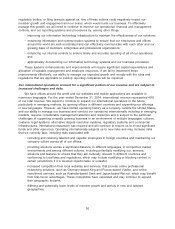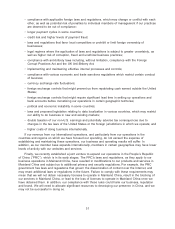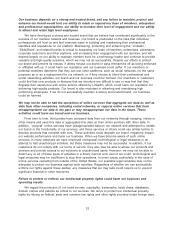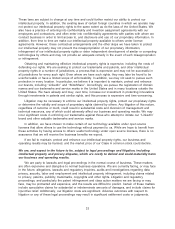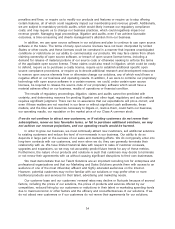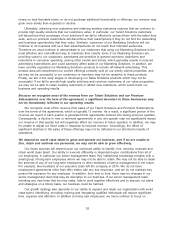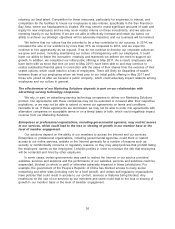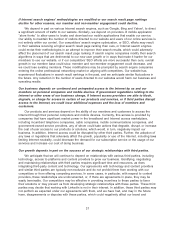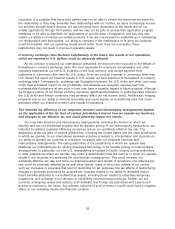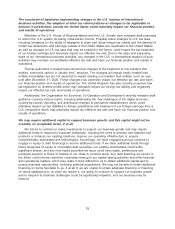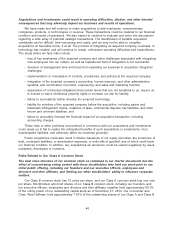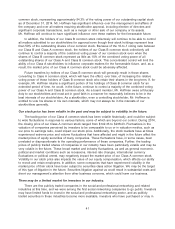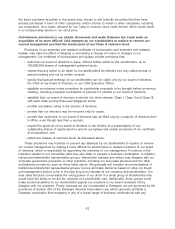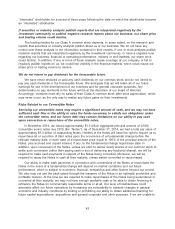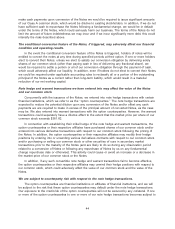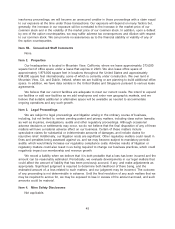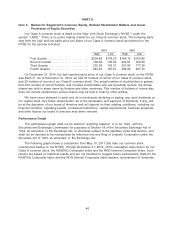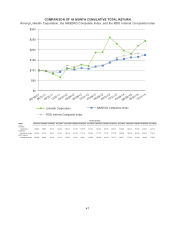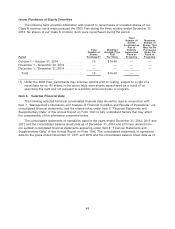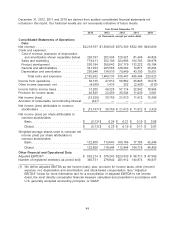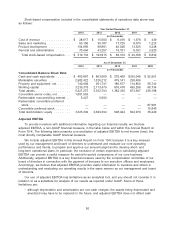LinkedIn 2014 Annual Report Download - page 42
Download and view the complete annual report
Please find page 42 of the 2014 LinkedIn annual report below. You can navigate through the pages in the report by either clicking on the pages listed below, or by using the keyword search tool below to find specific information within the annual report.Acquisitions and investments could result in operating difficulties, dilution, and other harmful
consequences that may adversely impact our business and results of operations.
We have made and will continue to make acquisitions to add employees, complementary
companies, products, or technologies or revenue. These transactions could be material to our financial
condition and results of operations. We also expect to continue to evaluate and enter into discussions
regarding a wide array of potential strategic transactions. The identification of suitable acquisition
candidates can be difficult, time-consuming and costly, and we may not be able to complete
acquisitions on favorable terms, if at all. The process of integrating an acquired company, business, or
technology has created, and will continue to create, unforeseen operating difficulties and expenditures.
The areas where we face risks include:
• loss of key employees of the acquired company and other challenges associated with integrating
new employees into our culture, as well as reputational harm if integration is not successful;
• diversion of management time and focus from operating our business to acquisition integration
challenges;
• implementation or remediation of controls, procedures, and policies at the acquired company;
• integration of the acquired company’s accounting, human resource, and other administrative
systems, and coordination of product, engineering, and sales and marketing function;
• assumption of contractual obligations that contain terms that are not beneficial to us, require us
to license or waive intellectual property rights or increase our risk for liability;
• failure to successfully further develop the acquired technology;
• liability for activities of the acquired company before the acquisition, including patent and
trademark infringement claims, violations of laws, commercial disputes, tax liabilities, and other
known and unknown liabilities; and
• failure to accurately forecast the financial impact of an acquisition transaction, including
accounting charges.
These risks or other problems encountered in connection with our acquisitions and investments
could cause us to fail to realize the anticipated benefits of such acquisitions or investments, incur
unanticipated liabilities, and adversely affect our business generally.
Future acquisitions could also result in dilutive issuances of our equity securities, the incurrence of
debt, contingent liabilities, or amortization expenses, or write-offs of goodwill, any of which could harm
our financial condition. In addition, any acquisitions we announce could be viewed negatively by users,
marketers, developers or investors.
Risks Related to Our Class A Common Stock
The dual class structure of our common stock as contained in our charter documents has the
effect of concentrating voting control with those stockholders who held our stock prior to our
initial public offering, including our founders and our executive officers, employees and
directors and their affiliates, and limiting our other stockholders’ ability to influence corporate
matters.
Our Class B common stock has 10 votes per share, and our Class A common stock has one vote
per share. Stockholders who hold shares of our Class B common stock, including our founders, and
our executive officers, employees and directors and their affiliates, together held approximately 59.1%
of the voting power of our outstanding capital stock as of December 31, 2014. Our co-founder and
Chair, Reid Hoffman, held approximately 11.6% of the outstanding shares of our Class A and Class B
40


